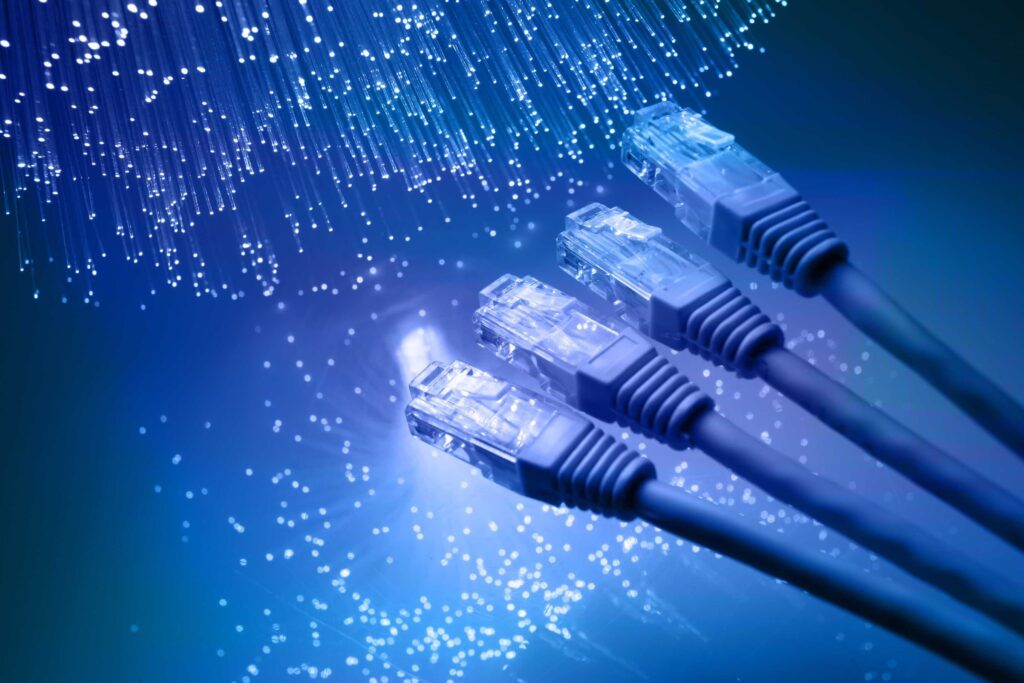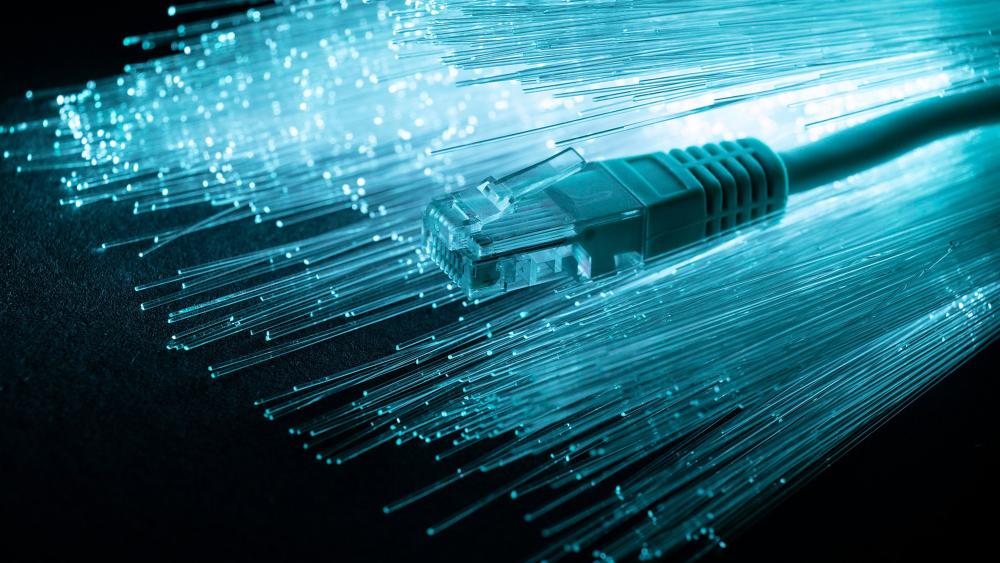Fiber optic cables have long been the backbone of global internet and telecommunications networks, carrying vast amounts of data across continents in the blink of an eye. Now, scientists are discovering that these same cables could play a revolutionary role in detecting earthquakes before they strike. This concept, known as Distributed Acoustic Sensing (DAS), allows ordinary fiber optic cables to act as thousands of virtual seismometers, capable of monitoring the slightest vibrations in the earth. The technology has the potential to transform earthquake early warning systems, giving communities precious seconds to take protective actions and reduce the risks of injury, loss of life, and infrastructure damage.
What Is Distributed Acoustic Sensing?
Distributed Acoustic Sensing is a technology that converts existing fiber optic cables into a network capable of sensing ground vibrations over long distances. By sending laser pulses through the fiber, DAS measures how the light is reflected back along the cable. Any slight disturbance, such as the movement of the ground caused by an earthquake, changes the reflection pattern. These changes can then be analyzed to detect the location, magnitude, and direction of seismic waves.
Unlike traditional seismometers, which are expensive and often spaced far apart, fiber optic cables are already widespread and can cover large areas. This gives DAS the potential to monitor regions that currently lack dense earthquake detection networks. The ability to detect subtle ground movements could make DAS a critical tool for predicting earthquakes before their full impact is felt.

How Fiber Optic Cables Detect Earthquakes
The concept might sound like science fiction, but it is grounded in solid physics. Fiber optic cables are extremely sensitive to changes in strain and vibration along their length. When an earthquake occurs, seismic waves propagate through the earth, causing the ground and anything anchored to it, like a fiber optic cable, to vibrate. These vibrations disturb the laser light traveling through the fiber, and sophisticated software can interpret these changes as seismic activity.
Because DAS treats every few meters of cable as an individual sensor, a single fiber line can act as thousands of seismic detectors. This allows scientists to see the fine details of a quake, including small ruptures along a fault line that might go unnoticed by conventional sensors. In practical terms, this means earthquakes could be detected faster and with higher resolution, potentially providing early warnings that could save lives.

Real World Applications of DAS
The use of fiber optic cables for earthquake detection is already showing promise in several real world scenarios. For example, in areas prone to seismic activity, DAS can help monitor active fault lines with unprecedented detail. By tracking how the ground shifts over time, researchers can study the behavior of faults and better understand the precursors to earthquakes.
In urban areas, existing telecommunications infrastructure can be leveraged to detect vibrations caused by earthquakes, reducing the need for installing additional expensive equipment. This could allow cities to implement early warning systems without significant new investment. Communities could receive alerts seconds or even tens of seconds before strong shaking reaches them, enough time to take actions such as stopping trains, shutting down gas lines, or moving people out of vulnerable areas.
DAS also has applications beyond earthquake detection. It can monitor landslides, sinkholes, and other geohazards by detecting shifts and cracks in the ground before they become catastrophic. In the future, the same fiber optic networks that deliver our internet could double as early warning systems for multiple types of natural disasters.

Advantages of Fiber Optic Earthquake Early Warning
There are several reasons why fiber optic cables offer an exciting new avenue for earthquake early warning
Wide Coverage
Because fiber optic cables already span entire countries, DAS can provide seismic monitoring over vast areas, including remote regions where traditional seismometers are scarce
High Sensitivity
DAS can detect minute ground vibrations that might be missed by conventional sensors. This allows for earlier detection of seismic activity and the possibility of tracking smaller precursor events that precede major quakes
Cost Efficiency
Since fiber optic cables are already installed for telecommunications purposes, using them for DAS does not require significant new infrastructure. This makes it a cost effective option for expanding seismic monitoring networks
Real Time Data
DAS provides continuous, real time monitoring, enabling authorities to receive immediate alerts and make timely decisions during an earthquake event
Integration with Early Warning Systems
The data collected by DAS can complement existing early warning networks, enhancing the accuracy and reliability of alerts. By combining traditional seismometers with DAS, authorities can create a more robust earthquake detection system
Challenges and Considerations
While DAS offers tremendous potential, there are challenges to consider. First, the sheer volume of data generated by fiber optic sensors requires sophisticated software and significant computational power to analyze quickly. Algorithms must be able to distinguish between natural seismic events and everyday vibrations caused by traffic, construction, or other human activity.
Environmental factors can also influence the accuracy of DAS measurements. Temperature changes, soil movement, and mechanical disturbances can create noise in the data. Scientists are working on ways to filter out these signals so that only meaningful seismic information is captured.
Integration with existing early warning systems presents another hurdle. Governments and organizations must coordinate data sharing, establish standards, and ensure that alerts are delivered quickly and effectively to the public. Despite these challenges, ongoing research suggests that DAS could become a reliable complement to traditional earthquake monitoring techniques.

The Future of Earthquake Detection
The adoption of fiber optic cables for earthquake early warning represents a shift toward more proactive disaster management. With DAS, communities could receive early alerts that allow them to secure buildings, stop trains, and protect vulnerable populations. Even a few seconds of warning can reduce injuries and save lives.
As technology advances, DAS could also play a role in long term earthquake research. By continuously monitoring fault lines, scientists can gain deeper insights into the patterns of seismic activity, helping to improve models that predict earthquake behavior. This knowledge could inform urban planning, infrastructure design, and emergency preparedness strategies.
In addition, DAS networks could extend to offshore regions, where traditional seismometers are difficult to deploy. Monitoring underwater fault lines and oceanic seismic activity could improve tsunami warnings and reduce the risk of large scale disasters in coastal areas.
Conclusion
Fiber optic cables, long celebrated for their role in modern communications, are poised to become invaluable tools for earthquake early warning. Through Distributed Acoustic Sensing, these cables can detect subtle ground vibrations, track fault activity, and provide early alerts that give communities time to prepare.
While challenges such as data processing, environmental noise, and system integration remain, the potential benefits of fiber optic earthquake early warning are profound. By repurposing existing infrastructure, scientists and engineers can create a cost effective, high resolution, real time monitoring system that enhances public safety and disaster preparedness.
As research progresses, the hope is that DAS will become a standard part of global seismic monitoring networks, helping to reduce the human and economic toll of earthquakes. The humble fiber optic cable, once thought of as simply a conduit for internet data, may soon become a lifeline for communities at risk from natural disasters.
Do follow UAE Stories on Instagram
Read Next – Vivo V60 Lite 5G: Slim Design & 6,500mAh Battery














